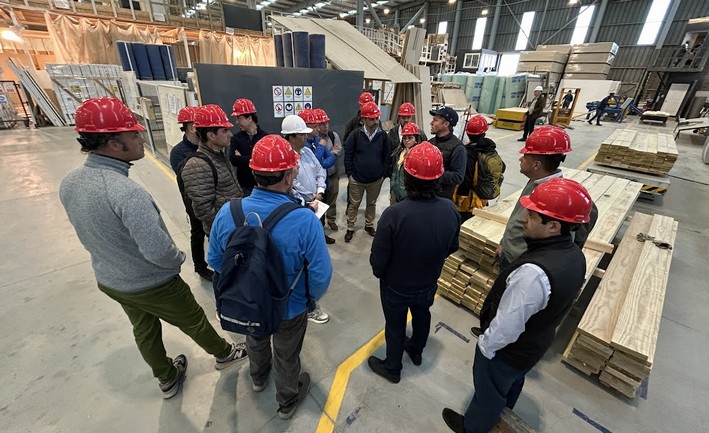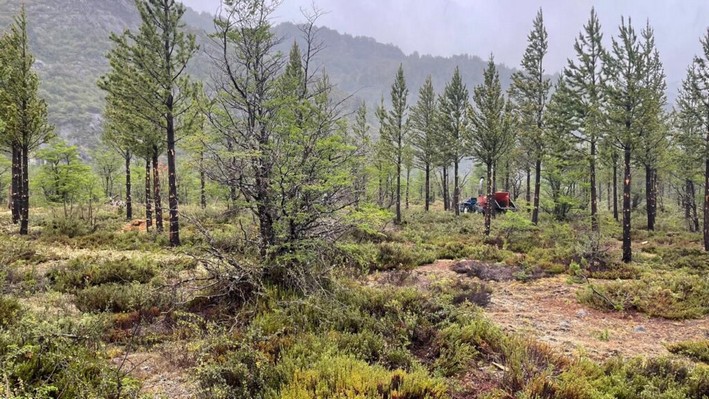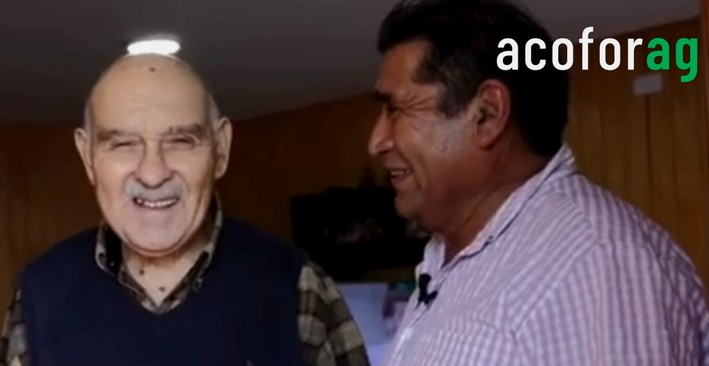Ñuble aims to keep wildfires at bay after last season's decline
In the coming months, the likelihood of wildfires becomes more significant as climatic conditions favor their spread. For this reason, coordination efforts with teams have already begun in preparation for the new season (October 2024 to May 2025).
The 2023-2024 wildfire season in Ñuble recorded a 31.9% decrease compared to the 2022-2023 period. Maintaining this downward trend is the goal of teams from the National Forestry Corporation (Conaf) and the Chilean Wood Corporation (Corma), who have carried out preventive measures throughout the year to reduce incidents, mobilizing necessary resources to mitigate their expansion.
In the coming months, the likelihood of wildfires becomes more significant as climatic conditions favor their spread. For this reason, coordination efforts with teams have already begun in preparation for the new season (October 2024 to May 2025).
"We have already held meetings to plan the wildfire season, including a preventive Cogrid held at Senapred facilities on September 24 with various ministries and institutions. We know preventive work creates actions to avoid the wildfires that affected the region two years ago, despite last season's 31.9% reduction," confirms Ñuble’s presidential delegate, Rodrigo García.
Climatic factors shape the wildfire regime in the Ñuble Region, making meteorological analysis essential in preparedness.
According to Martín Jacques Coper, a PhD in Climatology and academic at the University of Concepción’s Department of Geophysics, Ñuble and the broader south-central zone have experienced sustained drying and rising temperatures since at least 1980.
"As recent studies show, Ñuble has also seen an increase in extreme weather events like heatwaves during this period. Considering heatwaves with an intensity threshold of 30°C, this phenomenon is very noticeable in the central valley of this macrozone. Additionally, recent years have repeatedly broken maximum temperature records, with readings above 41°C in Chillán. As our research demonstrates, extreme weather conditions on such days pose a very high risk of large-scale wildfires in this area," he explains.
Thus, extreme heat episodes accompanied by strong winds created the conditions for complex wildfires, such as the 2023 Ninhue fire ("Casablanca 3"), the same year’s "Santa Gertrudis" fire affecting Quillón and Ránquil, or the 2017 San Nicolás fire ("Huampuli").
Regarding projections for the coming months and their potential influence on fire spread, the academic notes that this season has more combustible vegetation due to prior rains, which, once dried, poses a fire risk.
"Chile’s Meteorological Directorate forecasts relatively dry conditions and warm afternoons in the coming months. In Ñuble, where abundant fuel is available (especially from vast, uniform plantations of fire-prone exotic species), the wildfire regime is primarily limited by climatic and meteorological conditions. Under the seasonal forecast, this fuel will gradually dry toward summer, ultimately increasing fire risk," explains Jacques.
Conaf projects the La Niña climate phenomenon for the 2024-2025 summer, associated with dry conditions in Ñuble, though recent regional rains may mitigate this with added moisture.
"This context anticipates heightened wildfire alertness as summer progresses, though recent rainfall prevents rapid fire spread, especially in early spring. Forecasts have varied, with La Niña’s influence expected to reach a neutral phase in the latter half of summer," says Conaf’s interim director, Norma Pérez.
Prevention
The region continues facing the wildfire challenge, a phenomenon endangering lives, infrastructure, and the environment. Authorities, alongside communities and sectors, work year-round on prevention and mitigation through comprehensive, community-focused efforts.
One initiative involves removing flammable vegetation (firebreaks). A total of 352 kilometers are planned for the region, mainly in high-risk communes.
Prepared communities also play a crucial role, as they know their territory best.
"They have been key in risk analysis and creating community protection plans, sharing territorial knowledge, promoting wildfire prevention and mitigation, and forming strategic local alliances," adds the director.
Schools in the region also prioritize prevention in protection plans. "Teacher training includes environmental education focused on wildfire prevention," she adds.
Additionally, Conaf runs an agricultural waste management program in three communes—Yungay, Pemuco, and El Carmen—providing alternatives to burning, such as stubble incorporation, targeting interface zones.
Aware of the growing wildfire threat, Corma has intensified efforts in Ñuble through a comprehensive approach combining social prevention and infrastructure to reduce risks.
Corma conducts social prevention work with rural schools and communities, including environmental education, risk prevention training, and preventive infrastructure.
"We train rural schools, conduct door-to-door operations in villages, and collaborate with Ñuble’s network of committees. Corma companies maintain over 20,000 kilometers of annual preventive infrastructure, including firebreaks, fuel breaks, roadside buffers, irrigation canals, and power lines. In Nueva Aldea, we created a 700-meter perimeter ring to prevent industrial complex threats. We also built rings around forestry camps and timber yards with lighter or no fuel as a preventive measure," says Corma’s Forest Protection President, Ramón Figueroa.
Firefighting Deployment
Based on experience, the government has increased resources for the new season to improve emergency control.
The Fire Management Program includes $126.493 billion, consolidating a 28% growth from 2023-2024, linked to incorporating wildfire prevention into the regular budget.
"In our region, this increase funded supplies, more firefighters, and robust community prevention. We now have 19 brigades, including one for nighttime firefighting, plus expanded motorized resources like helicopters, tanker trucks, and planes. A total-firefighting strategy and private collaboration boosted available resources by 30%. This ensured no major wildfires this year, which we hope to repeat," says Agriculture Seremi Antonio Arriagada.
Conaf details regional resources: 14 ground brigades with water access, 2 mechanized (Skidder) brigades, 2 water trucks, and 2 helitransported brigades, totaling 20 regional brigades (same as last season) but with increased personnel (200 combat-ready).
Aircraft resources remain unchanged: 2 Air Tractors, 4 helicopters, and 1 coordination plane.
One brigade is already operational in Chillán, with 6 more in training. By late October, 15 brigades will be active, reaching 20 by early December.
Corma will deploy 138 resources in Ñuble for 2024-2025 (down from 145 in 2023-2024), including aircraft, brigades, and water trucks.
Season Recap
Conaf reports 406 wildfires in 2023-2024, mostly in Diguillín Province (211), marking a 31.9% drop from 2022-2023 and 22.8% below the five-year average.
Burned area decreased by 98.6% compared to 2022-2023 (826.31 ha) and 94.5% against the five-year average.
Of 406 fires, 265 were investigated: 195 negligent, 35 accidental, and 34 intentional. Top causes: residential waste/vegetation burning (36), unannounced cleaning burns (31), smoking-related (30), unannounced forest waste burns (20), and 34 with undetermined motives.
Corma also reports a drop in affected area—from 57,158 ha (2022-23) to 824 ha (2023-24).
"Biobío, Ñuble, and Maule saw the biggest declines due to strong public-private prevention and coordinated firefighting. Corma shared 200 robot cameras with Conaf for early detection, improving resource integration and effectiveness," explains Ramón Figueroa.
Source:La Discusión










